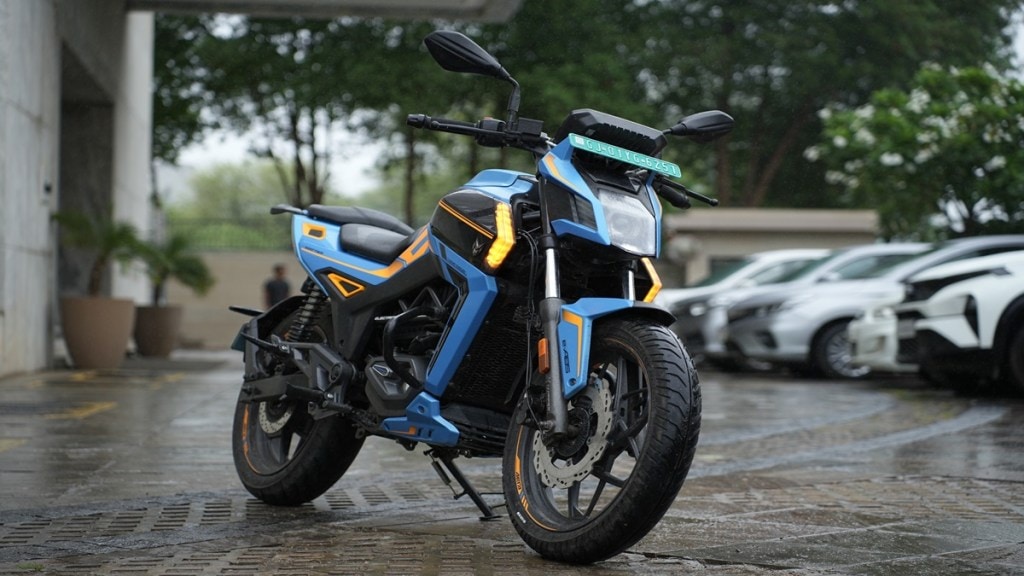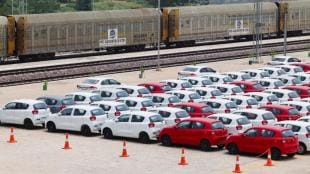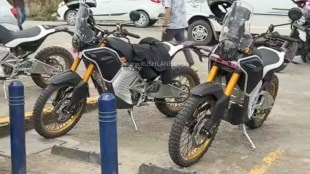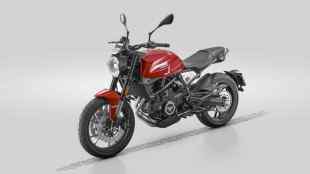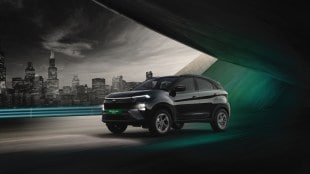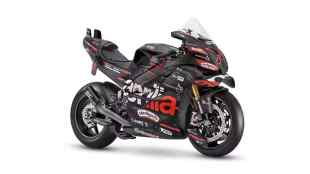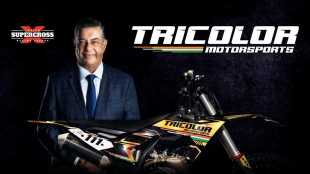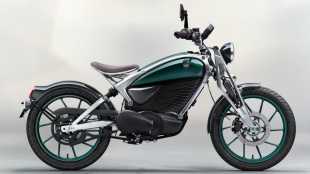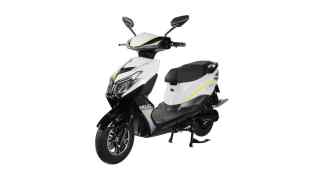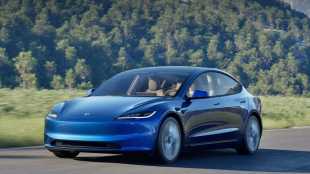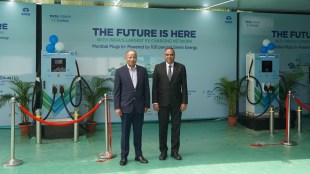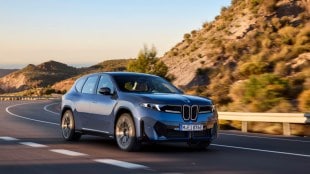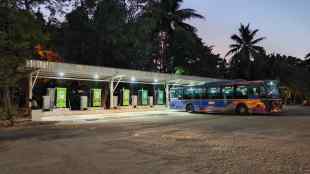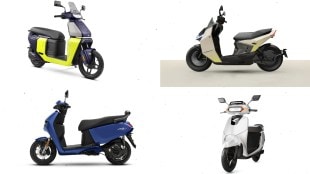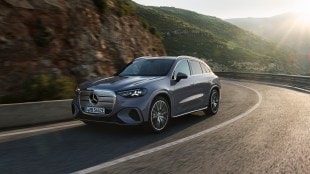For seasoned motorcycle riders, the act of shifting gears, managing the clutch, and feeling engine revs (and sound) is an integral part of the riding experience. In electric motorcycles, all of that is missing – and this possibly is one of the reasons why electric motorcycles aren’t getting popular.
The Matter Aera is different – it is India’s only electric motorcycle with gears! We rode it over two days, and most of it in the rain.
What is the Aera?
It’s the first bike from Matter Motor Works, an electric mobility and energy tech start-up from Gujarat. It gets a four-speed manual gearbox, liquid-cooled battery and powertrain, 7-inch touchscreen, onboard 5-ampere charging, and has a claimed running cost of just 25 paise per km. It’s available in two variants – Aera 5000 (Rs 1.83 lakh), and Aera 5000+ (Rs 1.94 lakh) – the latter has a few extra software features.
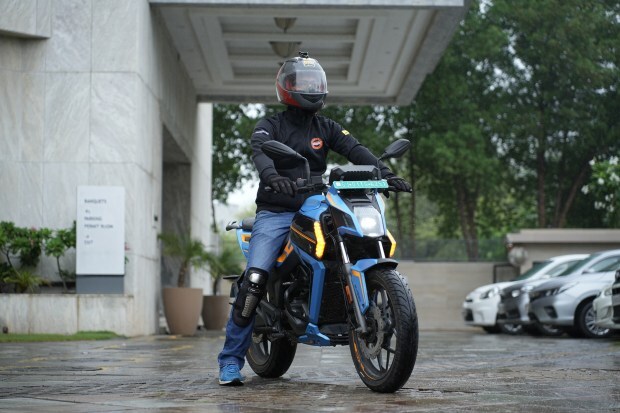
How’s the design?
Let’s compare it with other electric motorcycles – the Ola Roadster X+ looks minimalist and flimsy, the Oben Rorr looks basic, the Revolt RV400 looks tacky, and the Ultraviolette F77 SuperStreet looks far too aggressive.
The Aera blends traditional motorcycle familiarity with modern electric design – it looks a lot like the 200-cc street-naked bikes. In place of the petrol tank, you have the battery housing and the charger, in place of the engine you have the motor housing, it has 17-inch wheels, weighs 168 kg (it’s light), and has a seat height of 790 mm (accessible for most riders).
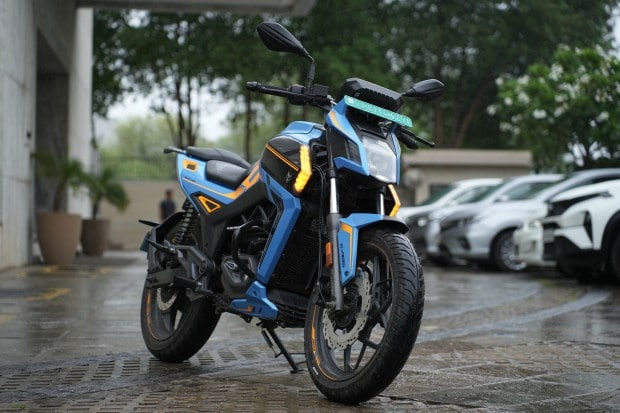
How does it ride?
The riding position is familiar – your left foot can feel the gearlever, and your left hand can feel the clutch (no other electric bike gives you that feeling). Shift into the first gear, twist the throttle, and in addition to the humming sound of the electric motor, you also hear mechanical sounds (gear changes and chain drive), which really engage the rider with the machine.
In the Sport mode, the Aera is extremely quick (0-40 km/h in just 2.8 seconds), but the range drops to 70-80 km. In the Eco mode, the real-world range is 120-125 km, but it feels lethargic. The City mode feels right (90-100 km range, and decent power).
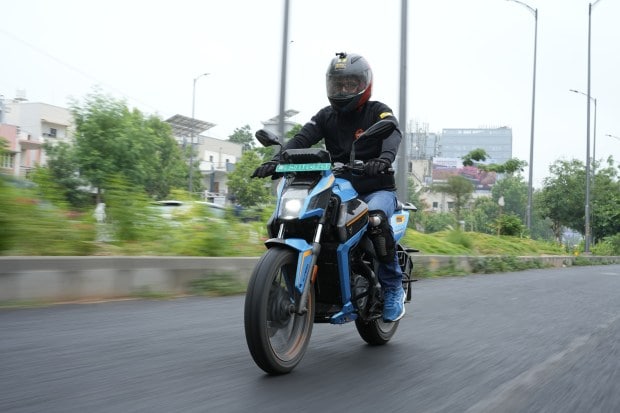
Riding in the rain
We parked the bike in heavy rainfall for hours. As it stopped, we got on it, and off it went. Electric bikes are as safe as any bike in rainfall – our test unit was shod with MRF tyres, which felt super-grippy even on wet roads.
EVs versus petrol bikes
While the Aera is definitely better than most other EVs, there is an area where electric motorcycles still lag petrol bikes – top-end performance. Any 200-cc petrol motorcycle will keep pulling well beyond 100 km/h, even up to 130 km/h, but the Aera loses steam as it starts to cross 80 km/h. That’s possibly deliberate – because if you give it immense power, you will immensely lose the range. But race the Aera against petrol bikes, and it keeps up till about 60 km/h.
The point is: It isn’t a highway machine, but is a perfect bike for the downtown, and can keep up with powerful petrol bikes from one traffic light to another.
An area it beats them outrightly is running cost. Any 200-cc petrol bike will cost you about Rs 3 per km, but running the Aera in the Eco mode will cost you just about 25 paise per km. Even if you gun it and always keep in the Sport mode, the running cost will still be just 50 paise per km.

Another area is technology – the Aera can be remotely controlled, is connected to the Internet, gets lifetime battery warranty, has an app that records its entire history and your riding habits … you name it.
It’s marginally pricier than most 200-cc bikes, but if you don’t have to ride far outside city limits, it’s a no-nonsense bike, and yes, after every ride, it will tell you how much money you saved on petrol, and that feeling is priceless.
